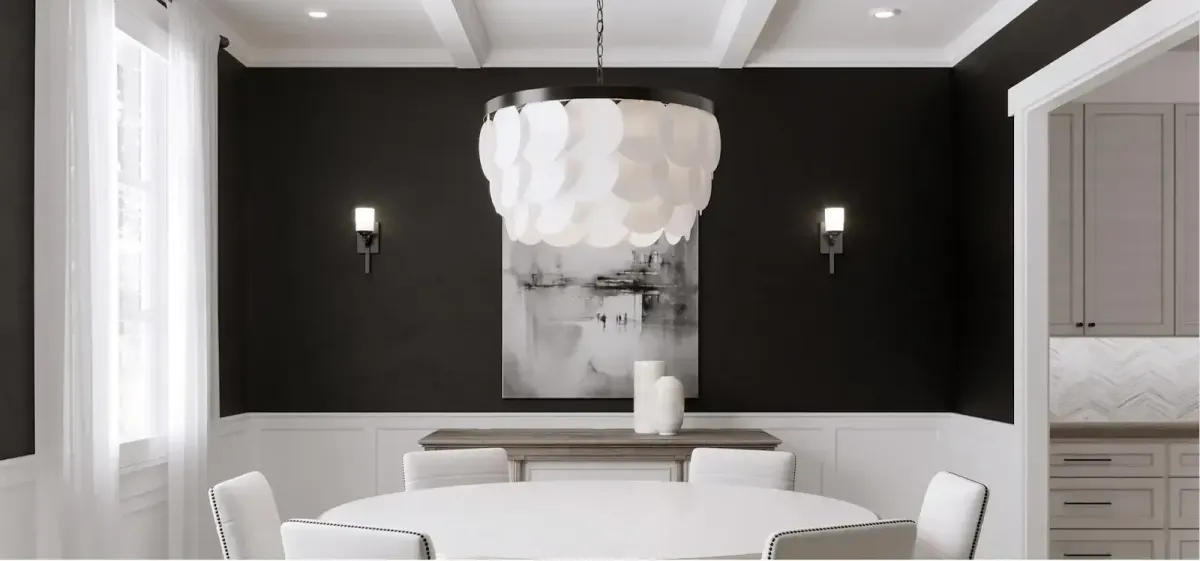
Improving the Ambiance of Your Dining Room with Lighting
Improving the Ambiance of Your Dining Room with Lighting
Lighting plays a crucial role in setting the mood and atmosphere of any room, especially the dining area. A well-lit dining room can transform ordinary meals into memorable experiences. In this blog post, we'll explore various ways to enhance your dining room's ambiance through thoughtful lighting choices.
The Importance of Proper Lighting in Dining Spaces
Good lighting in a dining room is about more than just being able to see your food. It's about creating an inviting atmosphere that encourages conversation and enjoyment. I remember having dinner at a friend's house where the lighting was so harsh that it felt like we were eating in an interrogation room. Needless to say, it wasn't the most comfortable experience.
Types of Lighting for Dining Rooms
Ambient Lighting
Ambient lighting provides overall illumination for the room. This can be achieved through:
Ceiling-mounted fixtures
Recessed lighting
Wall sconces
I find that a combination of these options works best. In my own dining room, I have a central chandelier complemented by wall sconces, which allows me to adjust the light levels depending on the occasion.
Task Lighting
Task lighting is focused lighting that helps with specific activities. In a dining room, this might include:
Buffet lamps
Under-cabinet lighting in a hutch or sideboard
These options are particularly useful when serving or preparing food in the dining area.
Accent Lighting
Accent lighting adds depth and interest to the room by highlighting specific features:
Picture lights for artwork
Display lighting for china cabinets
Up-lighting for plants or architectural features
Choosing the Right Fixtures
When selecting lighting fixtures for your dining room, consider:
Style and Design
The fixtures should complement your dining room's overall decor. A modern chandelier might look out of place in a traditional setting, and vice versa.
Size and Scale
The size of your lighting fixtures should be proportional to your dining table and room size. A good rule of thumb is that the diameter of a chandelier should be about half to two-thirds the width of the dining table.
Light Output and Color Temperature
The amount of light and its color temperature can significantly affect the room's ambiance. Warm light (2700-3000K) tends to create a cozy, intimate atmosphere, while cooler light (3500-4100K) can make a space feel more energetic.
Lighting Control and Flexibility
Dimmer Switches
Installing dimmer switches is one of the easiest ways to improve your dining room's lighting flexibility. They allow you to adjust the light levels to suit different occasions, from bright family dinners to intimate date nights.
Layered Lighting
Using a combination of lighting types gives you more control over the room's ambiance. You might use all the lights for a lively dinner party, but only accent lights for a romantic meal.
Energy Efficiency Considerations
When updating your dining room lighting, consider energy-efficient options:
LED bulbs
Energy Star certified fixtures
Smart lighting systems
These choices can help reduce your energy consumption and save on electricity bills in the long run.
Improving your dining room's ambiance with lighting doesn't have to be complicated. By understanding the different types of lighting, choosing appropriate fixtures, and incorporating control options, you can create a versatile and inviting dining space that enhances every meal and gathering.